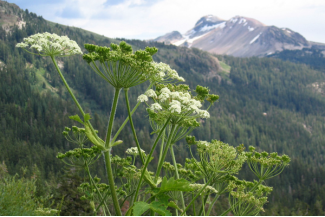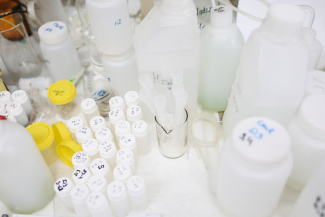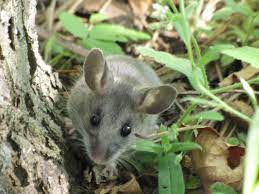Incident Lessons Learned - Contact with Poisonous Plant
23 June 2023

By Dcrjsr – Own work, CC BY-SA 3.0, https://rb.gy/0njah
A worker conducting vegetation field work in Alberta came into contact with the sap of cow parsnip, a poisonous plant that is commonly found in forests, grasslands and along rivers and roads. The worker developed a rash, which blistered when exposed to sunlight. Realizing that the skin condition was getting worse, the worker sought medical attention and reported the incident to their supervisor and to Health, Safety and Environment.
In response to the incident, the research group reviewed and enhanced their hazard assessment information related to poisonous plants and developed a comprehensive list of control measures. The group also instituted a practice of immediately stopping work and alerting others to new or unexpected hazards as they arise.
Consequences
Poisonous plants are an important consideration when conducting field research, as they may cause illness or injuries to the skin or other parts of the body. Persistent or worsening rashes and related medical conditions may be difficult to diagnose and treat in a remote field research environment, increasing the risk to workers and resulting in research delays and associated logistical challenges.
Culture of Care
The U of A’s Culture of Care Safety Action Plan emphasizes the importance of sharing safety insight and best practices with our colleagues to ensure that everyone returns home safely at the end of the day. In this case, the worker and their team took steps to ensure that everyone in the group understood the risks and control measures associated with the poisonous plant, and that measures were in place to protect others from a similar experience.
Call to Action
An effective hazard assessment process involves all members of a team considering tasks and identifying associated hazards, and together assessing risks and assigning control measures. Updating the assessment as new hazards arise, and ensuring that everyone is immediately made aware of new dangers and methods to protect themselves is critical to providing a safe work environment for all.
Learn more about poisonous outdoor plants and plants as an occupational hazard and visit the HSE Hazard Management webpage for hazard assessment templates and instructions.
The University of Alberta is committed to the safety, health and well-being of our faculty, staff and students. Every day, we advance this commitment to safety through the Culture of Care.
Related resources
- Incident Lessons Learned - Contact with Poisonous Plant (Google Doc)
- Culture of Care Safety Action Plan
- HSE Hazard Management webpage: links to hazard assessment templates and instructions
- Poisonous Outdoor Plants (Government of Alberta)
- Outdoor Workers and Poisonous Plant Exposures (Centers for Disease Control and Prevention)



